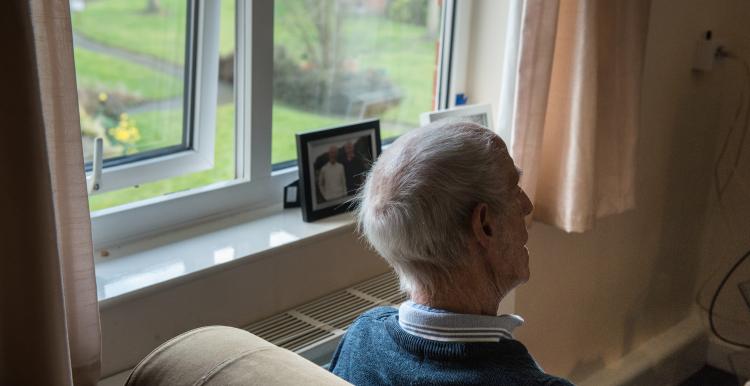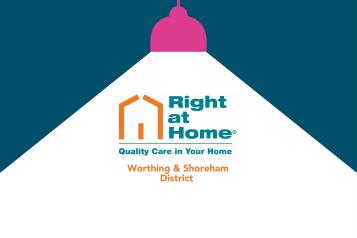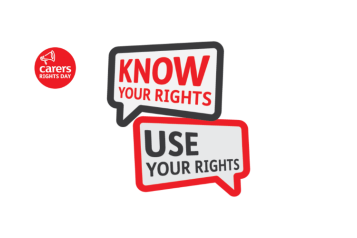COVID-19: What you need to know when visiting a care home

Last updated 19 July 2021
New Guidance from 19 July 2021
With restrictions easing across the country, the Government has updated their advice on supporting safe visiting in care homes.
Key information
- If you live in a care home, there is no limit on the number of ‘named visitors’ who can attend care homes for indoor visits.
- Every care home resident can nominate an essential care giver who can visit during an outbreak or period of isolation.
- You will no longer have to self-isolate after visiting a GP, dentist or day centre.
- Following a COVID-19 outbreak at a care home, visits will only pause for a minimum of 14 days rather than 28 days (except for outbreaks of variants of concern).
Go to full guidance
For the most up to date guidance, including information of what should be included in your care home’s visiting policy, visit the Gov.uk website.
See also the guidance for supported living settings.
Can I visit someone in a care home?
All care home residents can nominate named visitors for indoor visits. Your care home will ask who you would like as your named visitors, and there is no limit on the number of named visitors a resident can nominate.
The first-time care homes ask residents for their list of named visitors will be important, as the guidance recommends that these “should remain unchanged, within reason."
Rapid lateral flow tests on every visit and appropriate personal protective equipment (PPE) will support indoor visits.
Visits to a resident at the end of their life should continue in all cases. This includes in the event of an outbreak.
Every care home resident can also nominate an essential care giver. Essential care givers will have access to the same testing and PPE as care home staff. They can visit more often, including during outbreaks or periods of self-isolation for the resident. However, visits cannot occur if the essential care giver or resident is COVID-19 positive unless this is for an end of life visit.
For those not nominated as named visitors, visits can still be arranged outdoors, in designated visiting 'pods', behind windows, or substantial screens. Each care home will have its own arrangements for these types of visits.
Do I need to take a test to visit a care home?
If you visit a care home resident as a named visitor, you must take a rapid lateral flow test and test negative before every visit.
The care home should provide full details on their testing process and obtain consent from visitors before they take part in testing. Testing may occur on-site at the care home or the visitor's home using test kits provided by the care home, the Government, or another lateral flow test site.
If visitors test positive, they will not be allowed into the home for a visit. They must instead follow government guidance on self-isolation. Visitors testing positive should also complete a further test, which will either be provided to them by the care home if testing on-site or ordered through the government website or by calling 119.
If you have arranged with your local care home to be a resident's 'essential care giver', the care home will support you to follow the same testing arrangements in place for care home staff.
The care home may offer those visiting loved ones indoors at the end of their lives a test on arrival for their visit, but those visiting residents outdoors will not require a test.
If visitors are displaying any symptoms of coronavirus, they should not visit the care home, self-isolate and order a test immediately.
All visitors may be asked screening questions upon arrival. These may include:
- Have you been feeling unwell recently?
- Have you had recent onset of a new continuous cough?
- Do you have a high temperature? A care home may consider providing a temperature check for all visitors to provide confidence to visitors and staff.
- Have you noticed a loss of, or change in, normal sense of taste or smell?
- Have you tested positive for COVID-19 in the past ten days?
- Have you had recent contact (in the last 14 days) with anyone with COVID-19 symptoms or someone with confirmed COVID-19? If yes, should you be self-isolating, as advised to do so by NHS Test and Trace?
- Have you returned from an overseas visit recently, and are you still in the quarantine period?
What should I do to keep the person I am visiting safe?
Vaccination is one of our best defences to combat infection. It significantly reduces the transmission of infection, particularly after two doses. The Government strongly recommends that residents and visitors receive two doses of the vaccine before conducting visits.
To reduce the risk of infection, it is also vital that visitors wash their hands regularly, use any PPE the home provides, and limit contact with residents and staff by maintaining as much social distance as possible.
Although wearing a face covering or mask is no longer required by law, using masks can also reduce the risk of spreading COVID-19, especially when there is close contact between people in enclosed or crowded spaces.
Some close contact may be possible when following measures that reduce the risk of infection. For example you might be able to hold hands if hand-washing rules are in place or hug your loved one if you are double vaccinated, using PPE and have taken a COVID-19 test.
Your care home should communicate how you can keep the person you are visiting safe and what close contact might be possible for named visitors and essential care givers.
What is likely to change when I visit my loved one?
It is recommended that care homes operate a simple booking or appointments system to enable visits.
Indoor visits may take place in designated visiting rooms, but in all cases, they should take place in a well-ventilated room.
There may be some cases where visits are supervised, for example, during a visitor's first visit. This will not be necessary for most circumstances, but where used, the care home should clearly explain this in their visiting policy.
Any additional visits should take place where possible outside. Other appropriate visits include:
- Visits under a cover, such as an awning, gazebo or open-sided marquee, so residents and visitors remain at least two metres apart.
- Visits in temporary outdoor structures, such as COVID-secure visiting areas/pods, which are enclosed to some degree but are still outside the home's main building. These areas can only allow one visiting party at a time, will require good ventilation and screens between residents and visitors.
- Visits in a dedicated room such as a conservatory, which can be accessed from outside of the home. These areas can only allow one visiting party at a time, will require good ventilation and screens between residents and visitors.
- Visits at a window.
How often can I visit a care home?
There is no nationally-set limit on the number of named visitors who can visit residents in a single day.
However, the guidance allows care homes to decide how often and how long visitors can come into the home. Homes will likely make these decisions based on the layout of their home and the number of residents and families who wish to have visits.
The care home should set out any precautions or restrictions in their visiting policy.
How do I find out the visiting policy of a care home?
Each care home is unique, so providers will design visiting arrangements that consider the needs of their residents and what is possible within the layout and facilities of that home.
In producing these policies, providers should work collaboratively with residents, families and local social care and health professionals to strike a good balance between the risks and benefits of visiting.
Some residents will also have particular needs, for example, those who are unable to leave their rooms, those living with dementia, or those who may lack relevant mental capacity. For these residents, providers should work with the resident and their loved ones to develop a tailored visiting policy in line with the principles shared in the Government's guidance and the framework of the Mental Capacity Act 2005.
The care home should share its visiting policy and accompanying risk assessments with residents and their loved ones in all circumstances.
What happens if there is an outbreak at the care home?
In the event of outbreaks, it is recommended that indoor visiting be restricted, with only ‘end of life’ visits or visits from essential care givers recommended.
Visiting restrictions will continue until the care home has been assessed to be in recovery, this will likely be at least 14 days for most homes. However, if there is an outbreak of a ‘variant of concern’ – such as the delta variant of COVID-19 - restrictions will remain in place for 28 days.
The care home should inform you whether they will maintain outdoor visiting during an outbreak and when indoor visiting can resume.
What happens if I can’t see my family or friend in the care home?
If providers cannot safely allow visits in line with new guidance, alternative communication methods between residents and their families and friends should be discussed and offered. The care home should also provide regular updates to residents' loved ones on their mental and physical health, how they are coping and identify any additional ways they might be better supported, including any cultural or religious needs.
If you disagree with a care home's decision not to offer visiting or another decision, you should speak to the care home manager and discuss the home’s visiting policy and risk-assessment materials.
You can also contact the Care Quality Commission. They are responsible for inspecting the safety and quality of care provided in care homes.
Get in touch with us
Do you want to talk to someone about what these changes mean for care homes near you? We can help.
Can a care home resident come and visit me out of the care home?
Yes. New guidance states that visits out of care homes can be allowed for residents of all ages.
Each care home will have its policy for visits out of homes based on risk assessments to protect residents. These risk assessments should take into account:
- The vaccination status of residents, visitors and staff, including the extent of second vaccinations.
- Any testing of those accompanying the resident or who they intend to meet on their visit out.
- Levels of infection in the community.
- Variants of concern in the community.
- Where the resident is going on a visit and what activities they will take part in while on the visit.
- The mode of transport that residents intend to use.
Most activities outside of the care home will no longer be subject to self-isolation rules. However, there are two exceptions:
- Overnight stays in the hospital.
- Visits assessed to be high-risk following an individual risk assessment.
If a visit out is impossible without self-isolation on return because of COVID-19 risks, care homes should communicate the reasons for this decision to the resident and their loved ones.
In the event of an outbreak in a care home, the home will likely reduce opportunities for outward visiting (except in exceptional circumstances) for at least 14 days.
Read the guidance for visits out of care homes
The government have now published guidance for visits out of care homes. To find out more, please visit the Gov.uk website.


